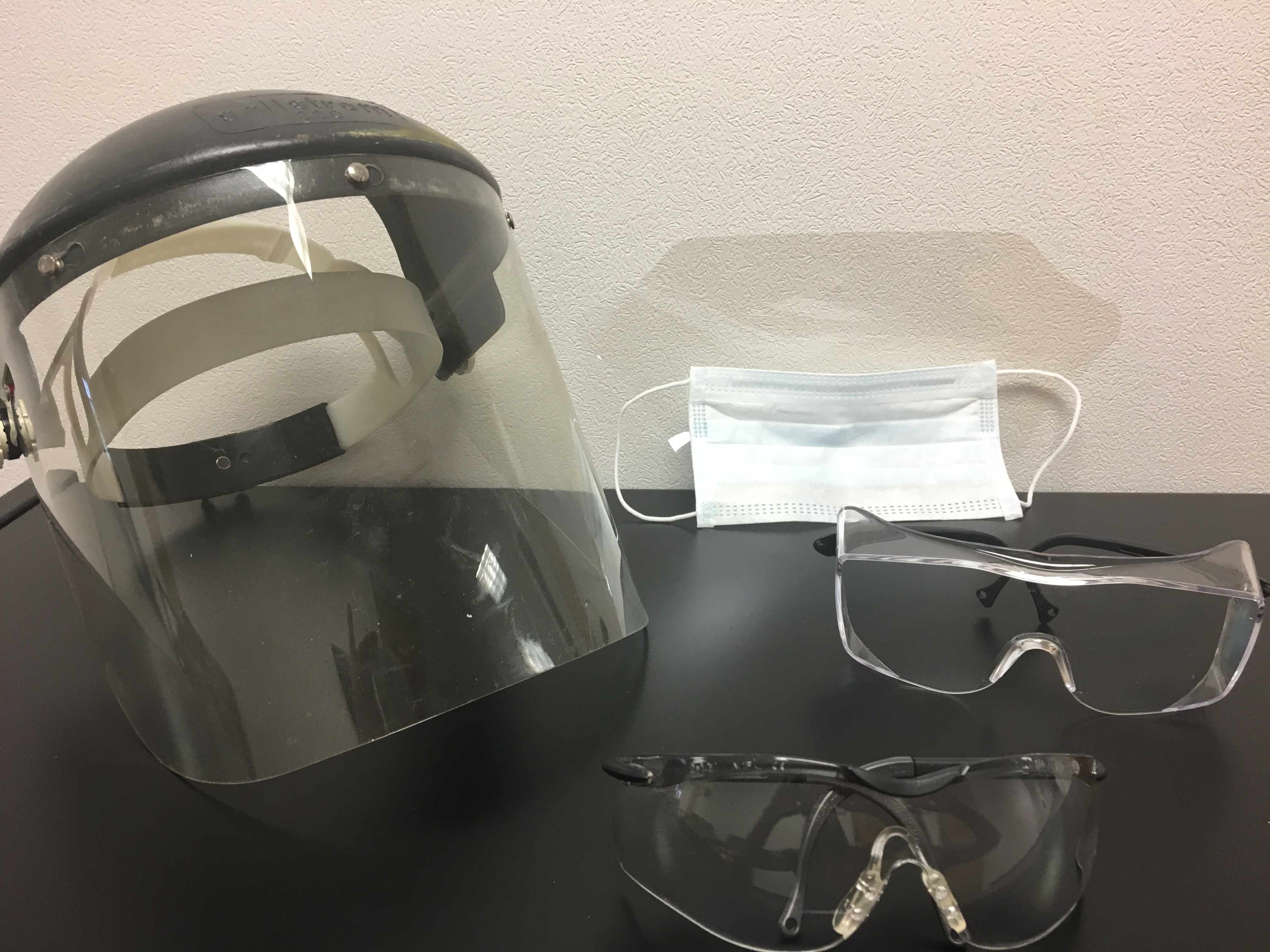Personal Protective Equipment
Engineering controls and administrative practices are the first line of defense to reduce exposure risks. Personal Protective Equipment (PPE) provides an extra layer when those efforts alone are insufficient. Personal Protective Equipment Compliance contains additional information.
Every lab must provide adequate PPE for each employee. Specific PPE requirements depend upon the particular hazard potential of a given task or job position. Safety Data Sheets provide some guidance for making this decision.
Call 303-724-0345 or email EHS for further assistance.

 All those working in a laboratory or other technical work area MUST wear closed-toe shoes and long pants (or long skirt/dress), so that skin
between the pants (or skirt/dress) and shoes is not exposed.
All those working in a laboratory or other technical work area MUST wear closed-toe shoes and long pants (or long skirt/dress), so that skin
between the pants (or skirt/dress) and shoes is not exposed.
Properly fitted safety glasses help protect eyes from flying objects and minor chemical or biological splashes. Design options are available to fit over prescription eyewear, or which have built-in prescription lenses. Safety goggles – stronger than safety glasses – provide even greater protection against flying particles and splashes.
Safety glasses must be worn when working with:
- Biohazards (e.g., bodily fluids, cell lines, rDNA)
- Acids or corrosives in any amount (e.g., acetic acid, sodium hydroxide)
- Flammable solvents in any amount (e.g., ethanol, tetrahydrofuran)
- Toxic solids greater than "1" on the NFPA hazard diamond (e.g., sodium azide, barium nitrate)
- Radioactive liquid or solid
- Live animals
Face shields provide added protection for the face when working with potentially explosive chemicals, and when mixing strong acids and caustics.
Consult manufacturer's permeation guide to ensure proper selection for the chemical being used.
Butyl gloves should be used when handling a concentration of 37% or greater formaldehyde/phenol mix. Disposable nitrile gloves (8mm thickness) may be used when handling formalin solutions.
Always remove gloves and wash hands before leaving the lab, and before touching door or sink handles or elevator buttons.
Never reuse disposable gloves.
Consider size and purpose when choosing gloves for use in the lab.
Lab coats may only be worn when in the lab - and not in public areas such as offices or lounges - to prevent the transfer of hazardous or infectious materials.
Lab coats must be worn at all times in the lab to protect skin and clothing from splatters and spills or any hazardous materials. They must be worn fully buttoned and with sleeves rolled down.Respiratory protection must be used in certain work environments, or when conducting particular processes. EHS must conduct a risk assessment for all individuals prior to the use of a respirator, unless that person's workgroup is already enrolled in the Respiratory Protection Program.
Contact EHS to update emergency contact information EHS for a risk assessment if:
- an individual and his/her workgroup are new to respiratory protection
- new hazardous airborne contaminants are present
- new processes, tasks or procedures are conducted
- an existing respirator does not provide adequate protection
If a risk assessment has been completed and hazards and processes associated with respiratory protection remain unchanged, refer to the Respiratory Protection Program page for information on initial enrollment or annual renewal requirements.